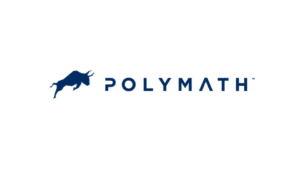Nowadays, where every second counts, slow financial transactions can be frustrating. Imagine needing to pay rent or receive your paycheck, but the transfer takes days to process. That’s where Automated Clearing House (ACH) processing comes into play. This innovative system is transforming the way money moves, making bank transfers faster, more efficient, and hassle-free.
Let’s explore what ACH processing is, how it works, and why it’s such a game-changer for modern banking.
What is ACH Processing?
ACH processing refers to the electronic movement of money between banks through a network called the Automated Clearing House. This system is regulated in the United States by the National Automated Clearing House Association (NACHA) and processes billions of transactions yearly.
Think of ACH as the invisible highway where financial transactions like direct deposits, bill payments, and online transfers happen seamlessly. It’s the backbone of modern banking, enabling businesses and individuals to send and receive funds quickly and securely.
How ACH Works
ACH processing happens in two main ways:
ACH Credits: These are “push” transactions where money is sent from one account to another. For example, when your employer deposits your paycheck directly into your bank account.
ACH Debits: These are “pull” transactions where money is taken out of your account, like when you pay a utility bill online.
Here’s a simplified step-by-step breakdown of how ACH processing works:
Initiation: A person or organization starts the transaction, either to send or request money.
Batching: The transaction details are grouped into a batch by the bank or financial institution.
Transmission: The batch is sent to the ACH network, where it’s verified.
Settlement: The ACH network clears the payment, and the funds are transferred between the involved banks.
This process typically takes 1-3 business days, but advancements in technology and the introduction of Same-Day ACH are speeding things up significantly.
The Benefits of ACH Processing
ACH processing offers a ton of advantages that make it the preferred choice for businesses and individuals alike:
Speed
Traditional bank transfers can take up to a week. With ACH, funds move much faster, often within a day. Same-Day ACH processing is even quicker, making real-time transactions a reality.
Cost-Effectiveness
ACH transfers are generally cheaper than wire transfers or using paper checks. For businesses, this means significant savings when handling payroll or customer payments.
Convenience
Imagine setting up automatic bill payments and never worrying about missing a due date again. ACH makes this level of convenience possible.
Security
ACH transactions are encrypted and monitored for fraud, ensuring that your money moves safely. Unlike physical checks, which can be lost or stolen, ACH payments are digital and traceable.
Eco-Friendly
By reducing the need for paper checks, envelopes, and stamps, ACH processing is better for the environment. It’s a win-win for both your wallet and the planet!
Common Uses of ACH Transfers
ACH isn’t just for businesses; it’s a system that benefits everyone. Here are some everyday uses:
Direct Deposit: Your employer uses ACH to send your paycheck directly to your bank account.
Bill Payments: Utility bills, credit card payments, and mortgage payments can be processed via ACH.
Online Shopping: Many e-commerce sites allow customers to pay directly through their bank accounts using ACH.
Subscriptions: Services like streaming platforms or gym memberships often use ACH for recurring payments.
ACH vs. Other Payment Methods
How does ACH stack up against traditional payment methods?
| Feature | ACH | Wire Transfer | Checks |
|---|---|---|---|
| Speed | Fast (1-3 days) | Immediate (hours) | Slow (days) |
| Cost | Low | High | Moderate |
| Convenience | High | Moderate | Low |
| Security | High | High | Low |
While wire transfers are faster for large, urgent transactions, ACH is more affordable and practical for everyday use. Checks, on the other hand, are becoming obsolete due to their slower speed and higher risk of fraud.
Challenges of ACH Processing
While ACH is a powerful system, it isn’t without challenges:
Processing Delays: Even though ACH is faster than traditional methods, delays can still occur, especially with standard ACH transfers.
Limitations on International Transfers: ACH is mainly used within the United States, limiting its usefulness for cross-border payments.
Transaction Limits: Some banks impose limits on the amount of money that can be sent or received via ACH.
The Future of ACH Processing
The future of ACH looks bright. Advancements like Same-Day ACH and the potential integration with blockchain technology could make transactions even faster and more secure. Additionally, as digital payment systems evolve, ACH is expected to become even more user-friendly and efficient, catering to the needs of tech-savvy users.
How to Use ACH Processing
Getting started with ACH processing is easier than you might think:
Link Your Bank Account: Most platforms, apps, and businesses require you to connect your bank account for ACH transactions.
Verify Your Details: Double-check your account and routing numbers to avoid errors.
Set Up Automatic Payments: For recurring bills or subscriptions, enable auto-pay options via ACH.
Monitor Transactions: Regularly review your account for accurate processing and to detect any unauthorized activity.
Conclusion
Automated Clearing House (ACH) processing has revolutionized how we move money, providing a faster, cheaper, and more secure alternative to traditional payment methods. Whether you’re a business owner managing payroll or a student splitting rent with friends, ACH makes life easier.
As technology continues to advance, ACH processing will only get better, setting the stage for a world where financial transactions are instant, seamless, and stress-free.



































